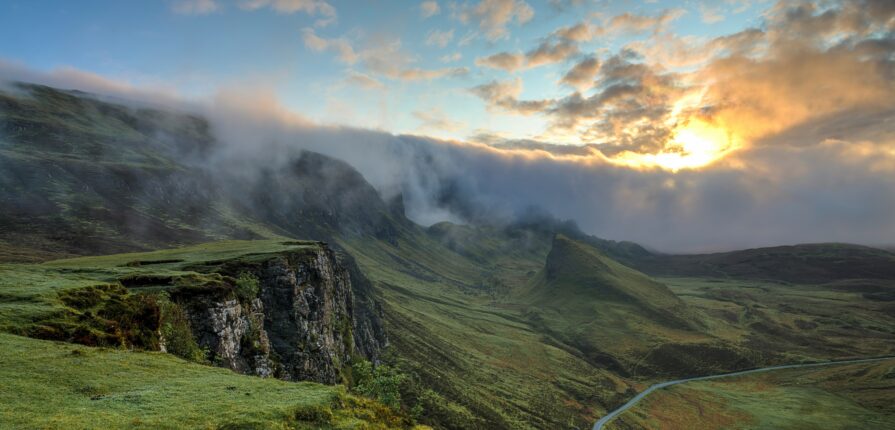Discover how nature creates its own music through caves, forests, rivers, and more. We often think of music as something made by people, with instruments crafted from wood, metal, or strings. But what if music has always existed in the natural world, just waiting to be discovered? Nature itself is full of incredible, organic sounds that, when harnessed, can create some of the most mesmerizing music.
Whether it’s the echoes of a cave, the rhythmic sounds of a forest, or the hum of a river, nature’s instruments are everywhere. Let’s dive into how these natural spaces have inspired musicians and sound artists to create their music — using the environment as both instrument and backdrop.
-Wednesday, May 21
- Caves: Echoes of Time
Caves are not only geological wonders but also natural sound studios. The unique acoustics inside caves can transform even the softest whisper into an echo that travels for hundreds of meters.
This phenomenon, called cave acoustics, has been explored by musicians and sound artists for centuries. The reverberations in caves create haunting, ethereal sounds that resonate in ways that no studio can replicate.
One famous example is Cave Music, a project where musicians perform in large caves like Carlsbad Caverns in New Mexico, where the natural reverb amplifies the sound, creating an otherworldly experience. These sounds were then captured and transformed into music, blending both natural and human-made tones.
For centuries, caves were used by ancient cultures for their acoustics, as their resonant spaces amplified the voice or music during rituals and ceremonies. The sound of a drum, a flute, or even a human voice is altered in a way that no other location can achieve — often becoming a part of the cave’s living history.
- Forests: The Symphony of Nature
Forests may not have the dramatic echoes of caves, but they possess a unique musical quality all their own. The rustling of leaves, the tapping of tree branches, the chirping of birds, and the hum of insects create a symphony of sounds that can be incredibly meditative.
Forest music also known as biophony is a term used to describe the sounds created by all living organisms in a forest. This includes animal calls, wind moving through the trees, and even the sound of rain falling on the canopy. Indigenous cultures have long recognized the musical quality of these sounds, often incorporating forest elements into their rituals.
More recently, artists have begun to use these natural soundscapes in their compositions. Music producers and sound designers use field recordings of forest sounds to inspire and enhance their music. A well-known example is the work of Björk, who has incorporated elements of nature — including sounds from the forest — into her electronic compositions.
In the modern world, eco-musicology explores how music and nature intersect, encouraging artists to engage with the environment as part of their creative process.
- Rivers and Waterways: The Music of Flow
Rivers, streams, and waterfalls have been used as natural instruments for centuries. The constant flow of water, with its rhythmic splashing, cascading waterfalls, and gentle babbling brooks, can create sounds that are both calming and energizing. These natural sounds are often used to evoke tranquility or a sense of power in music.
The waterphone, an instrument made from a collection of water-filled tubes, is an example of how water has been incorporated into music. The waterphone eerie, resonating sounds are often used in film scores to convey mysterious or haunting atmospheres, often paired with water’s natural sounds in nature.Musicians also often record the sounds of rivers and streams to create soundscapes for ambient music. The gentle flow of water can serve as a natural metronome — a steady rhythm that guides the creation of melodic and harmonic content.
- Wind: Nature’s Instrument
The wind has been a natural instrument for as long as human beings have been listening. It carries sounds, influences how trees sway, and creates its own melody through its movement. The sound of the wind itself is used in many musical traditions.
The Aeolian harp, an ancient string instrument played by the wind, is a perfect example of wind creating music naturally. It consists of a series of strings stretched over a frame that vibrate when wind passes through them, producing haunting and ethereal sounds.
Wind can also manipulate how we hear other natural sounds. The wind rustling through trees, the sound of wind chimes, or the howling of a gale — all are natural occurrences that humans have adapted into music. Musicians have been known to use wind to inspire or even create parts of their compositions. Think of the ambient soundscapes created by artists like Brian Eno, whose work draws heavily from nature.
- Volcanoes and Earthquakes: The Sound of Destruction
While not commonly used in music, the natural sounds of geological events, such as volcanic eruptions or earthquakes, have fascinated musicians. The rumbling of the Earth, the explosive sounds of volcanic activity, and the seismic shifts of the ground under our feet have inspired compositions in genres like experimental music and sound art.
The idea of earth music uses the deep, reverberating noises from beneath the Earth’s surface to create dramatic and intense soundscapes. Composers like John Luther Adams incorporate elements of geological phenomena to evoke the majesty and force of natural events.
- The Ocean: A Soundtrack for the Soul
The ocean’s waves are one of the most universal natural soundscapes, representing the flow of time, the power of nature, and calmness. Many musicians have used ocean sounds in their compositions, whether it’s the rhythmic crash of the waves or the gentle sound of the tide.
Oceanic soundscapes are also found in meditation and ambient music, where the sound of water lapping against the shore creates a relaxing atmosphere. Famous ambient musicians like Moby and The Orb have used recorded ocean sounds in their albums to create a sense of depth and tranquility.
- The Desert: Silence, Space, and Sound
While not traditionally associated with music, the desert offers a unique kind of sound environment — the quiet. The vast emptiness of the desert is broken only by the sound of the wind, the shifting of sands, and the occasional call of desert animals. This stillness can be deafening in its own way, often inspiring musicians to explore the tension between silence and sound.
The desert soundscape is used in modern music to convey themes of solitude, space, and the power of nature. Benoit Pioulard and other ambient musicians have captured the quiet yet eerie sounds of the desert to create atmospheric, introspective music.


